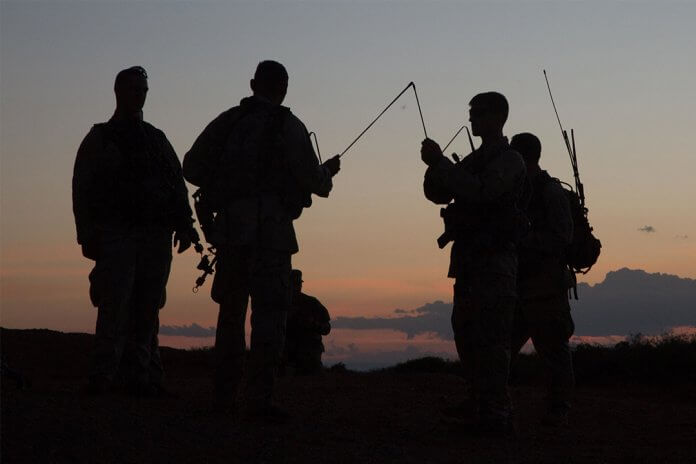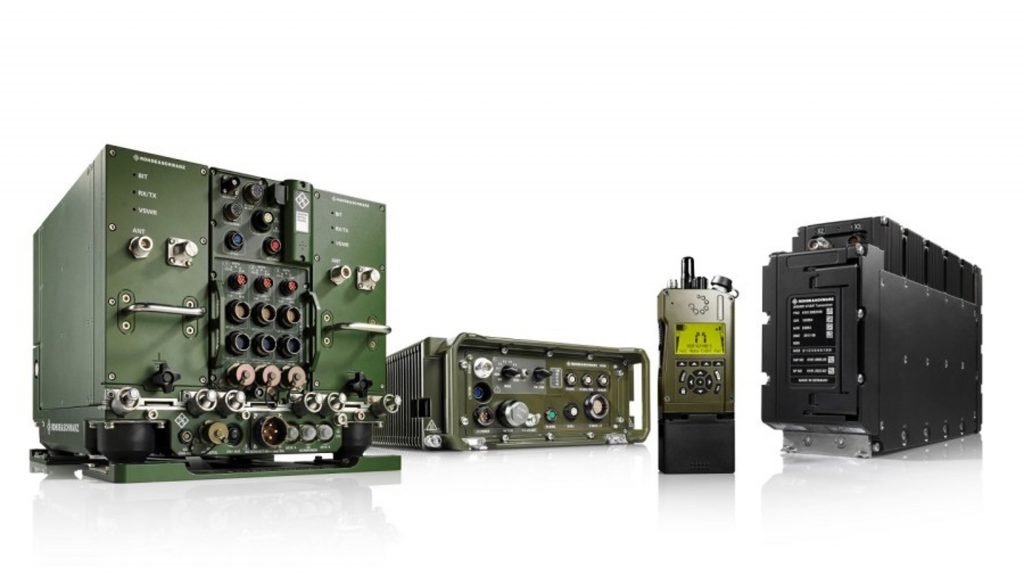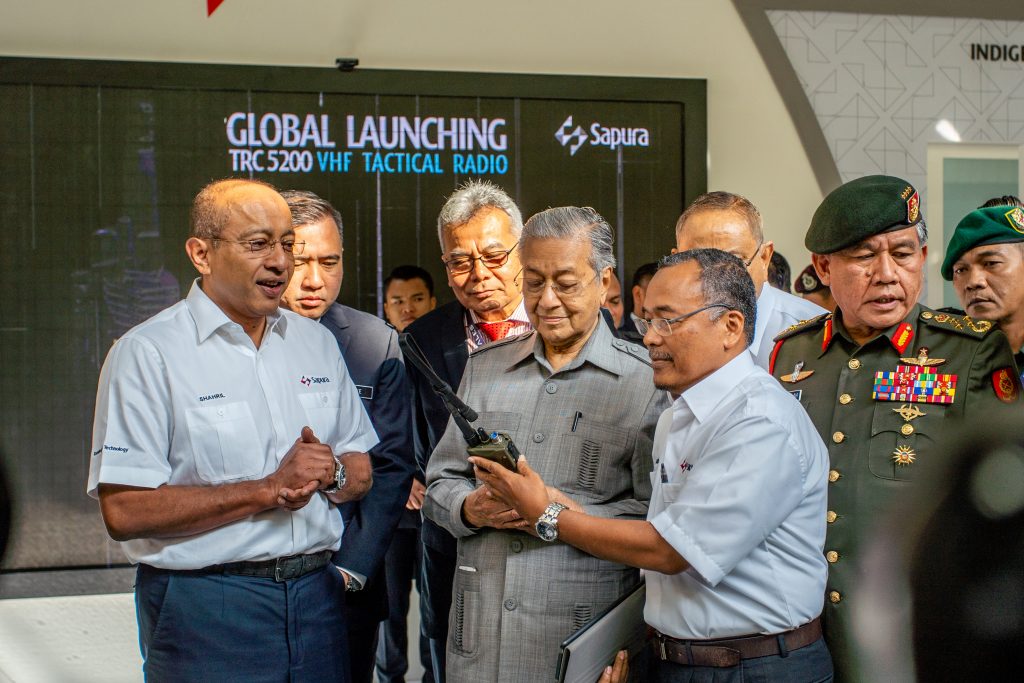
As military tactical communication needs evolve, Software Defined Radios (SDR) that form the core of the capability are packing more communications bands into smaller form factors, running more – and more advanced – waveforms, offering higher data rates and implementing tighter security protocols.
The tactical communications industry has changed since Armada’s last Tactical Radio Compendium. For example, the merger of two of the world’s most important players, Harris Corporation and L3 Communications, which was announced on 1 July, created L3Harris Technologies which claims to be the sixth largest defence company in the US and tenth in the world.
Meanwhile, the new company won a development prototype contract from the US Air Force as part of a competition to replace the service’s Rockwell Collins AN/ARC-190 HF radios. L3Harris’ offering is the Falcon Wideband, a software-defined digital multi-mode radio designed to augment space-based beyond-line-of-sight (BLOS) systems in SATCOM-denied environments.
Enabling data rates ten times greater than the ARC-190 can manage, the Falcon Wideband boasts embedded encryption, electronic counter-counter measures (ECCM), low probability of intercept and low probability of detection (LPI/LPD) and an SDR’s inherent ability to accept new waveforms and upgrades through software. The Falcon Wideband is also smaller and lighter than the ARC-190, combining three subsystems into a single package, according to the company.
Multichannel Manpack
Earlier in the year, the US Army awarded the company a follow on Low Rate Initial Production (LRIP) for AN/PRC-158 multi-channel manpack SDRs. These are two-channel sets capable of handling classified and unclassified data simultaneously. They feature integrated cross-banding between waveforms, including TrellisWare’s TSM, the Soldier Radio Waveform (SRW), the Single Channel Ground to Air Radio System (SINCGARS), SATCOM and others, adding new capabilities while remaining compatible with older sets.
This contract is the company’s second LRIP contract and is scheduled to be followed by operational testing as the set is fielded. Valued at up to $12.7 billion, the contract includes a five-year base and an additional five-year option. The US Army plans to buy about 65,000 HMS manpack radios under the Indefinite Delivery, Indefinite Quantity (IDIQ) contract.
MUOS Upgrade for Marines
Secure narrowband SATCOM capability is at the heart of a US Marine Corps order announced in January for Mobile User Objective System (MUOS) software upgrades to the service’s deployed Falcon III AN/PRC-117G manpack radios. The $75 million upgrade is designed to enable Marines to use the next-generation MUOS satellites launched to provide better voice and data communications anywhere in the world. The MUOS software upgrade will also serve a greater number of users, providing them with more robust communications in disadvantaged environments such as urban and high/low latitudes.
NSA Certificates for PRC-163

On 6 November last year, the US National Security Agency (NSA) awarded Type-1 certification to L3Harris for the AN/PRC-163 multichannel handheld SDR. This certification permits the radio to transmit secure voice and data communications up to ‘Top Secret’ level on both channels for VHF/UHF line of sight, SATCOM and mobile ad-hoc networking applications. The 163 is compatible with legacy SATCOM systems and coalition radio systems the company emphasises, and has capacity for capability growth including support for MUOS, SATURN and other emerging waveforms through software updates. Type 1 certification came a couple of months after a major order from the US Army for 1,540 sets plus vehicle mounting kits and support services awarded under the IDIQ contract covering the two-channel Leader radio requirement.
Type 1 encryption is proliferating at the tactical edge, as the advent of a generation of miniature devices exemplified by General Dynamics Mission Systems’ new KG-175N TACLANE Nano indicates. This small form factor HAIPE encryptor is intended for mobile and dismounted users and, says the company, supports the bandwidth required by voice, video and data applications, including real-time video and data analytics in a package that measures 1.2in high by 3.5in wide by 2.25in deep and weighs less than 226 grams (8oz).
MUOS for Navy too
Improved security is also part of an update to the MUOS SATCOM waveform announced in September 2018 by GD Mission Systems, which led the team that created, tested and released the MUOS WFv3.15 version that adds MUOS capability to the US Navy’s software defined Digital Modular Radio (DMR) system. WFv3.15 also improves secure voice, video and data communications across the MUOS network.
With more than 700 sets in service, the DMR is a four-channel radio that supports surface ship, submarine and shore site communications and can communicate with a broad range of tactical radios used by the military, handling information at different security levels, each channel operating independently of the others.

Brazil’s new SDRs
The Brazilian military needs a new generation of secure tactical SDRs, which are under development by IMBEL. The publicly owned defence giant has selected NordiaSoft to provide the Software Communications Architecture (SCA) solutions for the new radios, the Canadian software house announced in September. IMBEL is using the company’s embedded Components (eCo) Suite in the development process.
“The NordiaSoft eCo Suite for SCA version 4.1 provides us with the environment we need to speed up the development of our next generation SDRs,” said IMBEL’s Multiband Tactical Radio project manager Gustavo Loss. “We rely on the eCo Suite to address all the SCA requirements that enhance supportability of our waveforms.”
The eCo Suite for SCAv4.1 development includes tools to create SCA models, automatically generate source code, monitor and debug SCA systems and allow any kind of Human Machine Interface (HMI) to control the SDR, says NordiaSoft.
Switzerland Seeks New C2
Switzerland is looking for new generation command and control systems under the overarching TK A (Telecommunication, Army) programme. In early July, Roschi Rohde & Schwarz, a Swiss subsidiary of the German radio technology house, put in a bid for Ersa mob Komm (replacement mobile communication components), which is an important TK A sub-project. The offering is based on the company’s SOVRON networking system that consists of SDRs running network capable waveforms and a tactical router from RUAG, which is partnered with R&S for the programme.
After extensive tests by the German Army, SOVRON family radios have been selected for the German contribution to the NATO Very high readiness Joint Task Force (VJTF) 2023, which Germany is to lead. The Army’s IDZ-ES soldier system and the Puma infantry fighting vehicle are important elements of VJTF and are to be connected by the end-to-end over the first mile using SOVRON family SDRs under contract awarded to R&S as a subcontractor to Rheinmetall Electronics.

With simultaneous voice and data capabilities, the radios involved are the handheld SHDR/SOVRON HR and vehicular SDTR/SOVRON VR, which are interoperable with the German Armed Forces’ joint radio system SVFuA, which uses SOVRON D radios. The radios will run SOVRON WAVE tactical waveforms optimised for territorial and collective defence and international crisis management operations, providing Mobile Ad hoc Networking (MANET) functions. The first batch of which will be for command vehicles and are scheduled for delivery in 2020.
Belgium Picks Synaps
Thales’ CONTACT SDR systems, known as SYNAPS for export, are part of a broad package of onboard intelligence and data handling capabilities selected by Belgium under the CaMo (motorised capability) agreement with France signed at the end of 2018 to be incorporated into Scorpion family vehicles. Thales started work on the electronics for 382 Griffon multi-role armoured vehicles and 60 Jaguar reconnaissance and combat vehicles in late June, vehicles that will be delivered in partnership with Arquus and Nexter.
Griffon and Jaguar are to have collaborative combat capabilities enabled by common vetronics that provide computing power to integrate navigation, protection, observation and communication systems, with the SYNAPS SDRs providing the comms component.
Finally, Malaysia’s long-running policy of building up its high-technology industries, particularly on the defence side, has taken a step forward with the launch of the Sapura Thales Electronics (STE) TRC 5200, which Thales says has been fully designed and developed in Malaysia. This 5W handheld VHF radio has been through field trials in several countries besides Malaysia, says Thales, and STE expects to sell more than 10,000 TRC 5200s over the next five years, around twice as many as were sold of its first-generation predecessor that was supplied to countries in Asia, Middle East, Africa and South America.

Flexible networking, advanced security features and SATCOM capabilities, once the preserve of only the largest, best funded militaries, are now expected by many more countries in the market for modern radio systems.












